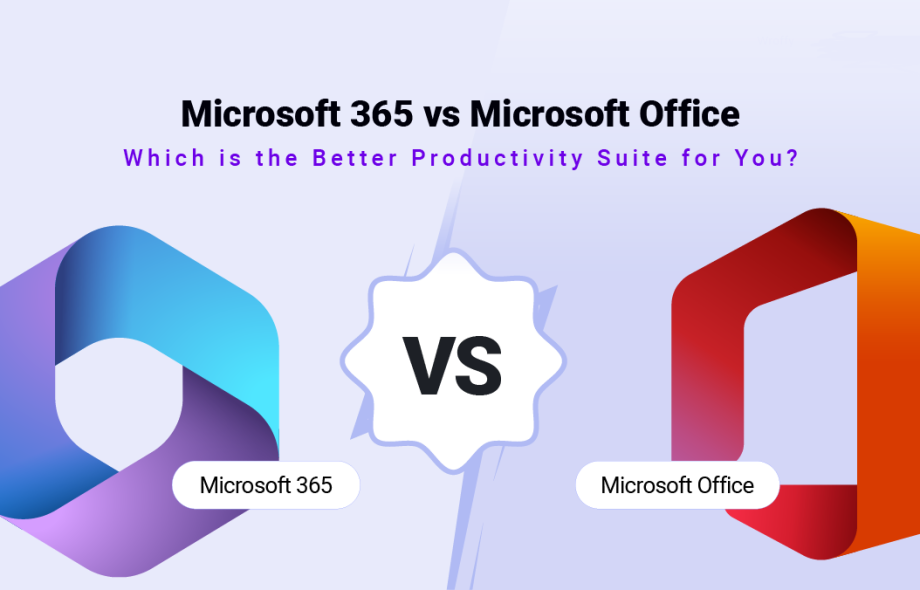Productivity tools have never been more important in the current hybrid world. Nevertheless, quite a few users still do not know the difference between Microsoft Office and Microsoft 365 – two similar products from Microsoft. In 2025, the gap between them has widened, and it involves distinct licensing, features, and user experience. This article picks out what businesses, small firms, and individuals should understand.
What is Microsoft Office?
Microsoft Office is a one-time purchase software suite. All you need to do is pay a one-off payment to install classic versions of such applications as Word, Excel, and PowerPoint on one computer or one Mac. Your license on that device is a permanent license, but you haven’t received feature updates yet, only basic security patches.
Key characteristics:
- One-time payment (no subscription)
- Offline apps only
- Limited updates after purchase
- Licensed per device
- No cloud services included
Office is suited for those who like to have a stable, non-changing experience, and you don’t need the latest updates or online collaboration tools.
What is Microsoft 365?
Microsoft 365 for business (previously Office 365) is a subscription-based productivity platform consisting of familiar Office apps (Word, Excel, PowerPoint, and Outlook) plus cloud services in the form of OneDrive, Teams, SharePoint, and Exchange Online. Users pay per month or yearly, but there is always a session to try the latest features, updates, and security enhancements that have been installed overnight without alerting them.
As we move on to 2025, Microsoft 365 is still expanding through its AI-driven tools, including Microsoft Copilot, and easy access with the help of Teams and improved cloud collaboration.
Key characteristics:
- Paying by subscription (monthly or annual part)
- Always updated with the latest features
- Convenience of accessing it on various devices (PCs, Mac, mobile phones)
- Stacks and templates in One Drive Cloud storage using 1 TB or more
- Domain built in collaboration tools (Teams, SharePoint)
- AI features (e.g., Copilot)
- Cross platform web versions of apps intended for use in the browser
Microsoft 365 Product is intended for customers who are mobility, collaboration, and innovation oriented.
Which Should You Choose in 2025?
Choose Microsoft Office if:
• You want a single purchase that has no running charge
• You work alone or offline
• You don’t have to have new features or cloud collaboration
Choose Microsoft 365 if:
• You want to access the latest features constantly
• You collaborate with others frequently
• You work on several devices and areas.
• You want to see AI tools such as Copilot integrated into your workflow.
The Bottom Line
In 2025, Microsoft Office is still a solid solution for users who need a reliable and offline toolset. It is updated rarely and without the cloud, perfect for simple and local tasks. At the same time, Microsoft 365 has become a vibrant cloud-based solution for productivity, fed by AI innovation and today’s collaboration tools, including Teams and Copilot. It provides continuous improvements, Cross-device access, and integrated cloud storage, and thus, better accommodates modern, connected workflows. Though Office brings in stability and familiarity, Microsoft 365 brings flexibility, scalability, and advanced capabilities for organizations that move towards hybrid work, digital collaboration, and the latest technical innovations.
Conclusion
In 2025, most enterprises will find Microsoft 365 the clearer option with better long-term value, continual innovation, and increased flexibility. With cloud-based services, the artificial intelligence-driven tools such as Copilot, and collaborative work between devices, enable modern hybrid workplaces. However, for those with specific offline needs or for a simple, unchanging solution with no subscription costs involved, a one-time Microsoft Office license might still be preferable. Although lacking new features and cloud integration, it offers stability and familiarity, which are based on local installation and the ownership of traditional software rather than continuous updates and the collaboration of online software.

